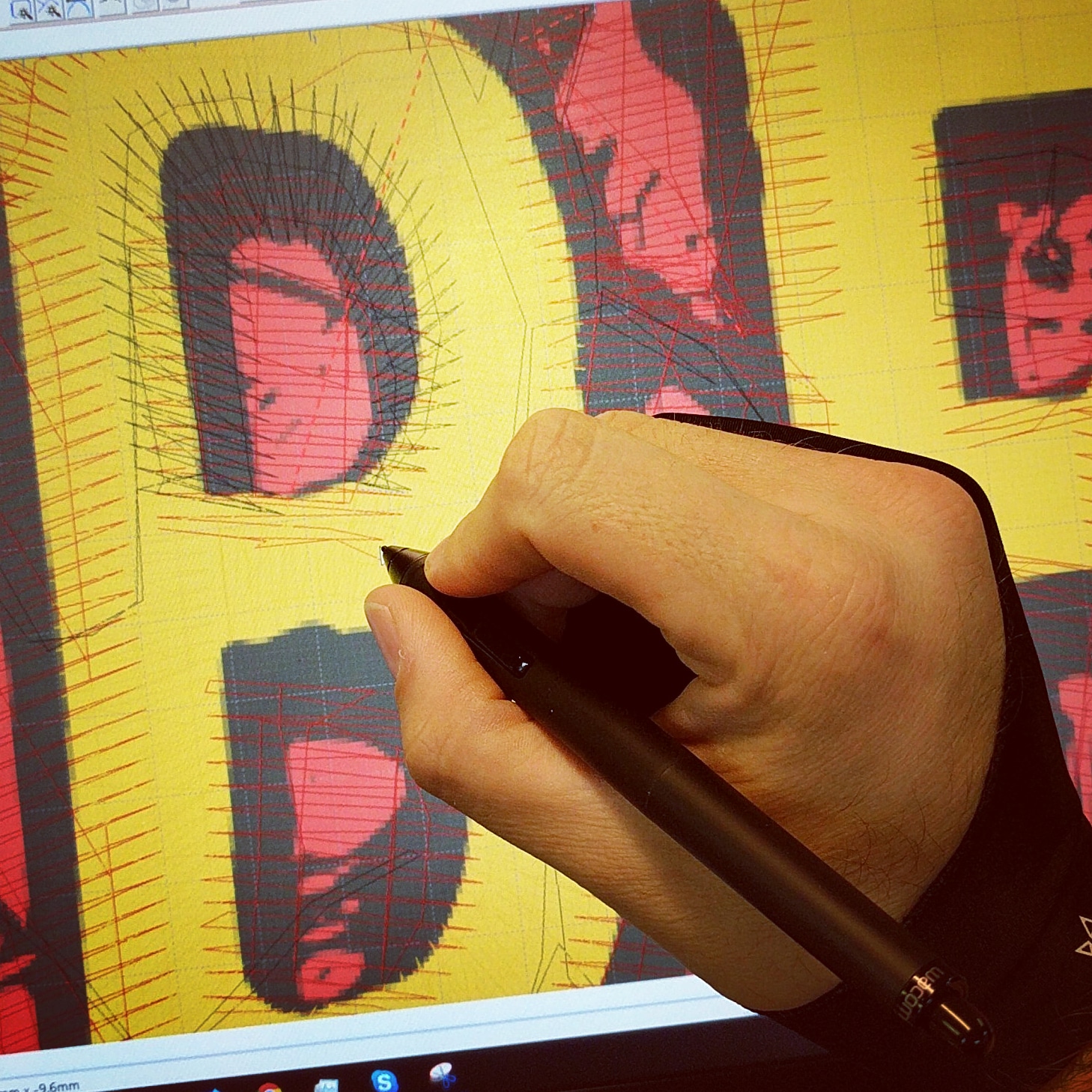Understanding the Embroidery Digitizing Refine: Your Ultimate Overview
Embroidery digitizing is a careful craft that needs precision and competence to translate complex designs right into electronic formats for equipment embroidery. As artisans start this trip to understand the needlework digitizing process, a thorough understanding of the fundamentals sets the foundation for excellence. Nonetheless, beyond the basic understanding lies a world of sophisticated software, specialized tools, and nuanced techniques waiting to be checked out. By delving into the subtleties of digitizing, one can unlock a world of creative opportunities and raise their embroidery tasks to brand-new elevations.

Understanding Embroidery Digitizing Essentials
Needlework digitizing essentials form the structure upon which detailed designs are converted right into machine-readable layouts for precise sewing. This initial step in the embroidery digitizing procedure is vital for guaranteeing that the final embroidered product is a loyal depiction of the original style. Understanding embroidery digitizing fundamentals involves comprehending crucial ideas such as stitch kinds, sew direction, density, underlay, and pull payment.
Stitch kinds play a crucial role in identifying the visual and textural end result of the embroidered style. By selecting the ideal stitch kind, whether it be satin, fill, or running stitch, digitizers can attain the desired impact and boost the overall top quality of the embroidery. In addition, stitch instructions affects the flow and measurement of the style, while density determines the spacing and insurance coverage of the stitches.
Moreover, underlay stitching supplies stability to the style by securing the material and protecting against distortion during the needlework procedure. Pull payment is one more necessary factor to consider to combat the all-natural tendency of textile to contract when sewn. Mastering these needlework digitizing essentials is fundamental for producing professional-quality stitched products.
Choosing the Right Digitizing Software Application
Picking the ideal digitizing software application is a crucial choice that significantly impacts the performance and quality of the needlework digitizing process. Digitizing for Embroidery. When selecting the right digitizing software application, it is necessary to take into consideration elements such as the complexity of layouts you intend to produce, the user-friendliness of the software program, the degree of client support used, and the compatibility with your needlework equipment
There are different digitizing software choices readily available out there, varying from fundamental programs for beginners to sophisticated software application for professional digitizers. Some prominent selections consist of Wilcom EmbroideryStudio, Hatch Embroidery Software, and PulseID. These software plans use a wide variety of tools and features to assist you create intricate layouts effortlessly.
Prior to deciding, it is a good idea to check out the various software choices through complimentary tests or demos to establish which one ideal matches your needs. In addition, checking out reviews and seeking suggestions from seasoned visit this web-site digitizers can supply beneficial insights right into the staminas and weaknesses of each software program package (Digitizing for Embroidery). By meticulously assessing your needs and comparing the features of different digitizing software application, you can make an informed option that enhances your embroidery digitizing operations
Digitizing Tools and Strategies

Optimizing Style Settings for Embroidery
Grasping the details of design setups is fundamental in attaining optimal lead to the needlework digitizing procedure, structure upon the foundation laid by recognizing digitizing devices and strategies. When optimizing style settings for needlework, it is necessary to think about aspects such as stitch type, density, padding, Visit This Link pull compensation, and registration. Sew type selection impacts the total feel and look of the design, with alternatives like satin, fill, and running stitches using different textures and results. Density refers to the spacing and density of stitches, impacting the design's insurance coverage and resilience. Proper padding sewing offers stability and stops material distortion, especially for intricate layouts or on stretchy products. Pull compensation changes for textile stretch throughout sewing, guaranteeing exact layout replication. Enrollment setups align different components of the style accurately, keeping total design integrity. By fine-tuning these style settings, embroiderers can enhance the top quality and precision of their embroidered creations.

Troubleshooting Common Digitizing Issues
When coming across usual digitizing issues during the embroidery process, it is vital to comprehend the origin triggers and apply efficient remedies immediately. One common issue is stitch density concerns, where stitches might be too dense, creating the textile to pucker, or as well thin, resulting in spaces in the layout. Adjusting the stitch density settings in the digitizing software can help fix this problem.
One more regular challenge is thread breaks during the embroidery procedure. This can happen due to various factors such as wrong stress settings, plain needles, or using low-grade string. Ensuring correct upkeep of the needlework machine, including routine needle modifications and stress adjustments, can reduce the incident of thread breaks.
In addition, layout enrollment mistakes can lead to misaligned aspects within the needlework style. Inspecting the style placement in the digitizing software and making necessary changes prior to sewing can aid in preventing this concern. By Our site attending to these typical digitizing problems without delay and properly, you can ensure a smoother embroidery process and top notch completed products.
Final Thought
Finally, understanding the needlework digitizing procedure calls for a strong understanding of the essentials, the appropriate selection of software program, and expertise of devices and techniques. Optimizing design settings and troubleshooting usual digitizing problems are important action in guaranteeing top quality needlework outcomes. By complying with these actions vigilantly, one can accomplish precision and performance in the digitizing process.